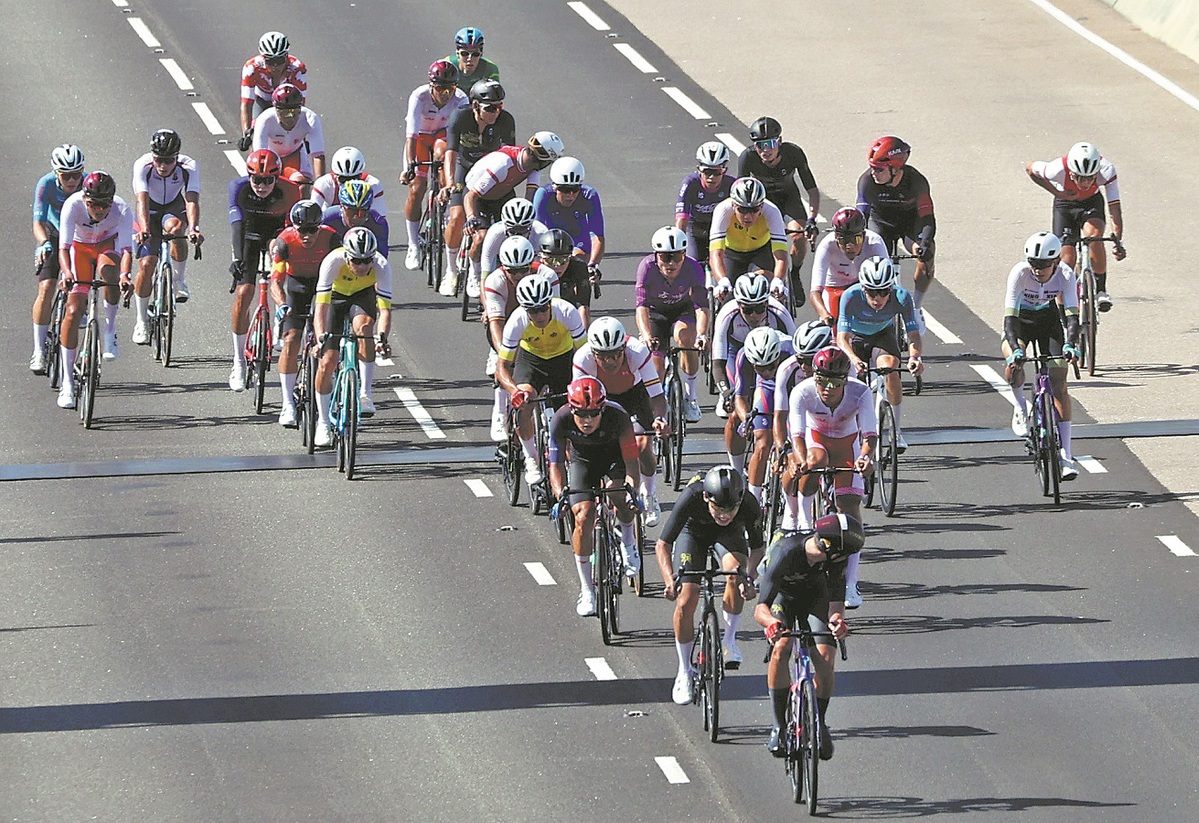Historic games cycling race a testament to GBA integration
Spectacular event involving cross-sea bridge highlights tech advances, region's connectivity






Crowds of people eagerly lined the railings on both sides of the scenic Qinglyu Road in Zhuhai, Guangdong province, on Saturday, as a sea breeze took the edge off the hot day. The spectators were waiting for over 100 competitors in the men's individual road cycling race at the ongoing 15th National Games.
Starting in Zhuhai, then passing through Macao's Taipa Island and Hong Kong's Lantau Island before returning to Zhuhai, the 231.8-kilometer race was a first for the games.
All three games hosts — Guangdong and the Hong Kong and Macao special administrative regions — were linked by a single competition, with riders passing through checkpoints six times without stopping. In the National Games' 66-year history, it was the first staging of a cross-boundary race.
This unique experience for both athletes and spectators was made possible by the ongoing integration in the Guangdong-Hong Kong-Macao Greater Bay Area. In recent years, this integration has been further enhanced by infrastructure development, boosting connectivity and mechanisms that make people-to-people exchanges more convenient.
Macao rider Kam Chin Pok said the event had deepened his understanding of connectivity within the Greater Bay Area.
"It's not just about this competition. Crossing the boundaries is becoming more and more convenient for the public. After the games, I believe people will know more about the Greater Bay Area and how integrated it has become," he said.

Kam, who competed in a trial race in November last year, said the experience of riding across the Hong Kong-Zhuhai-Macao Bridge — which opened in October 2018 — for a second time was still a great thrill.
"The Hong Kong-Zhuhai-Macao Bridge is truly magnificent. Most of the time, we can only travel on it by car. To get this close to the bridge on a bicycle and to feel the wind is a completely different experience, which I think maybe only the National Games could offer," Kam said.
Li Dongyu, who represented Tianjin, echoed Kam's view. He said riding on the bridge was an awe-inspiring experience as the scenery constantly changed, from cityscapes to sea views and tunnels.
"If not for this race, I might never have had the chance to travel between Zhuhai, Hong Kong and Macao, all in just over five hours," said Li, whose role was to collect water and other supplies from the support vehicle for his teammates.
Han Feng, deputy secretary-general of the Chinese Cycling Association, said racing on the bridge — which spans 55 km and is among the world's longest cross-sea bridges — was a bold and challenging concept.
The bridge stands approximately 50 meters above the sea, equivalent to the height of a 20-story building. As cyclists travel at speeds exceeding 40 km per hour amid the vast expanse of sea and sky, the strong sea winds hitting the peloton make maintaining a steady course no easy feat.
"Globally, no cycling race has ever covered 60.8 km on a cross-sea bridge. Despite the difficulty, this will undoubtedly become the highlight of the route," said Han.
Li from Tianjin also praised the efficient organization of the event. "At the crossing checkpoints, staff were waving flags to guide us at each crossing, and there were barriers along the road to prevent crashes. I could feel the support from the event staff in all positions, working to ensure we finished the race safely."




















